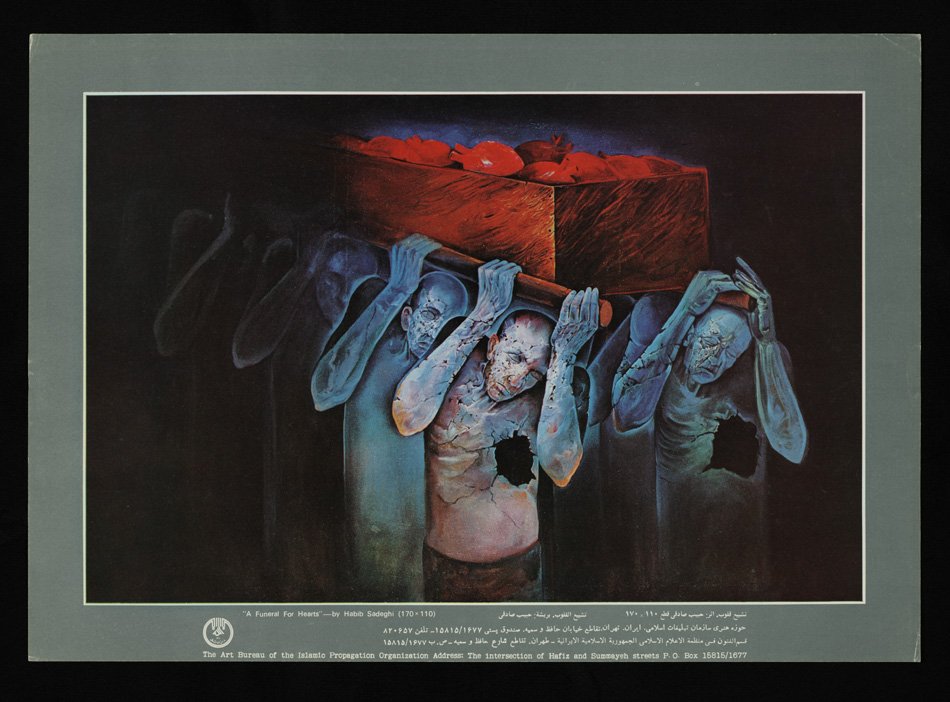Posters have long acted as effective tools to disseminate various ideological messages during periods of revolution and war. Designed for mass distribution and aimed towards a large public audience, they embed social, political, and religious concerns that frequently are articulated through both text and image. The Graphics of Revolution and War exhibit explores how posters served as powerful modalities for mobilization and communication during the Iranian Revolution of 1979 and the Iran-Iraq War (1980-88). This permanent online exhibit was collaboratively produced in conjunction with a loan exhibition of the University of Chicago’s posters on display at the Indiana University Art Museum from October 15 to December 18, 2011.
A Graphic Reminder
The 1979 Iranian Revolution and the ensuing Iran- Iraq War produced an enormous amount of visual material, much of which still remains unexamined. Works produced during this period—which forever altered the balance of power, both regionally and globally—provide a glimpse into these indelible events and their impact on Iranians and recent history. Visual materials were an important tool of dissemination for a largely illiterate audience, and today they stand as a collective graphic memory of those traumatic years. One such graphic caveat, the highly evocative A Funeral for Hearts, survives as a visual reminder of the physical and emotional pain Iranians endured for over a decade, as a group of dying men carry their own hearts to the grave.
Visualizing these experiences of human trauma and suffering allows individuals to collectively remember, mourn, and safeguard their experiences within a shared historical memory. Iranian posters thus historicized events as they unfolded by commemorating the recent past, preserving the ever-changing present, and charting the unknown future.


